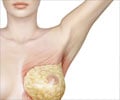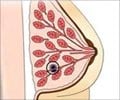Researchers have developed a groundbreaking model to predict nerve damage risk in breast cancer patients undergoing treatment, enhancing personalized care strategies.

Prediction models of persistent taxane-induced peripheral neuropathy among breast cancer survivors using whole-exome sequencing
Go to source). More and more people are becoming cancer survivors. But even if they have survived the disease, an increasing number still suffer from the side effects of cancer treatment. In a recent study from Linköping University, researchers studied the side effects of taxanes, a chemotherapy drug used to prevent breast cancer recurrence. The drawback of the treatment is that some patients suffer nerve damage as a side effect.
‘Researchers developed a prediction model for #nervedamage risk in #breastcancer patients undergoing #taxane drug treatment. #womencancer’





“Side effects in the form of nerve damage are very common after treatment with taxanes for breast cancer, and they often persist for several years. For those affected it is extremely stressful, and it has a major impact on quality of life. So it is a major clinical problem, which has received more attention in recent years, but there has been no way to know which individuals are at greatest risk of side effects”, says Kristina Engvall, who recently completed her PhD at Linköping University and is a doctor at the oncology clinic at Ryhov County Hospital in Jönköping. Investigating Side Effects of Taxane Drugs in Breast Cancer Treatment
The researchers began by carefully surveying side effects in patients treated for breast cancer with either docetaxel or paclitaxel, the two most common taxane drugs. Between two and six years had passed since treatment. 337 patients were asked to describe the severity of the nerve damage they experienced, or peripheral neuropathy as it is also called. Most common was cramps in the feet, which more than one in four patients had. Other side effects included difficulty opening a jar, numbness in feet, tingling in feet and difficulty climbing stairs.The researchers sequenced the patients' genes and then built models that link genetic characteristics to various side effects of the taxane treatment. This allows the models to predict the risk of nerve damage. This type of model, known as a prediction model, has not previously existed for taxane-induced peripheral neuropathy. The researchers succeeded in modeling the risk of persistent numbness and tingling in feet.
The two models were able to separate the patients into two clinically relevant groups: one with a high risk of persistent side effects, and one that corresponded to the frequency of peripheral neuropathy in the normal population. The researchers used two-thirds of the data to train the models through machine learning. They were then able to use the remaining third of the patients to validate the models, which was found to work very well. Validating that the models also work in a different group is an important step.
“Women who have been treated with taxanes after breast cancer surgery make up a very large group in healthcare worldwide, so this is a major and clinically relevant problem”, says Henrik Gréen, professor at Linköping University, who led the study published in the journal npj precision oncology.
Advertisement
In the long term, the prediction model could be adopted as routine in healthcare. But first, research is needed in order to find out whether the prediction model also works well in other population groups than the Swedish population.
Advertisement
Reference:
- Prediction models of persistent taxane-induced peripheral neuropathy among breast cancer survivors using whole-exome sequencing - (https://www.nature.com/articles/s41698-024-00594-x)
Source-Eurekalert















